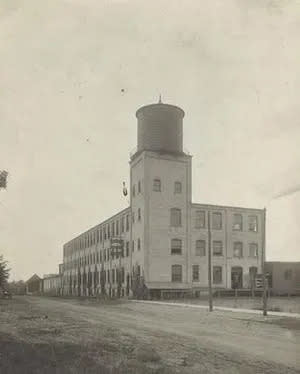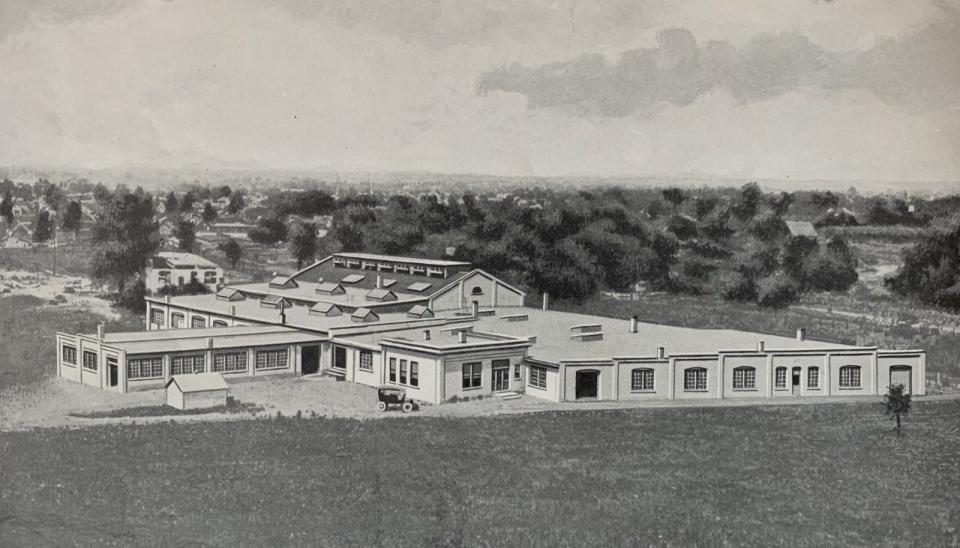Holland History: Jan Vogelzang and his carpentry skills
Like many entrepreneurs, Jan Vogelzang needed encouragement — it came from an employer and his spouse, Clara, who had the foresight to budget for and purchase land.
More: Steve VanderVeen: How the Vogelzangs first arrived in Holland
More: Steve VanderVeen: The many jobs and toils of Jan Vogelzang
Jan quit several factory jobs. The day he quit the Ottawa Furniture Company, Jan went to the home of Walter Lane, the president of the Bush and Lane Piano Company, and lobbied for work.
The next morning, when Jan arrived at the factory, the foreman assigned Jan to the cabinet-making room. There, to his amazement, Jan discovered that even though Mr. Lane had been born in London, England, and had lived in Canada before moving to Chicago and then Holland, most of the laborers in the factory were Swedish, including Jan’s foreman.

Jan also observed the piano-cabinet-making process: a man carted pieces of cut wood from the machine room to the cabinet room where a team of workers glued them together. Then a man moved the newly-glued cabinets to the finishing room, where workers applied seven or more coats of varnish; then, after the varnish dried, another crew rubbed the surface, and still another crew glued on more parts.
Finally, yet another team of workers attached the sound board to the cabinet and then one man tuned it; and at every step, Walter Lane inspected their work. At the time, in the early 1910s, the piano business was booming; to keep up, the men worked ten hours a day and nine hours on Saturday, at which time the company paid them.
When he discovered Jan’s skills, Mr. Lane moved him to the repair room; then selected him for special jobs, such as making a screen-sided porch for General Manager William Beach’s residence, and doors for Mr. Lane’s new house.
Unfortunately, Jan irritated Mr. Lane when he showed him an error Mr. Lane had made on one of his designs. The emotional distance between the two men extended when Jan contracted tuberculosis and had to spend four months quarantined on his porch at 236 W. 19th Street, forcing Clara to care for him and their two sons and two daughters.
Fortunately, Central Avenue Christian Reformed Church came to the rescue. But when Jan returned to work, Mr. Lane cut his pay to his original wages. Frustrated once again, Jan walked out.
Jan’s next job was with the Charles Limbert Furniture Company. There, management promoted Jan to foreman, a job he thought he always wanted. Then the plant manager also asked Jan to build him a screen-sided porch. When he discovered it took Jan less than one-fourth of the time it took workers from Scott Lugers Lumber Company to do the same job, he told Jan that Jan should go into business for himself.
He also told Jan he'd better start now, because soon Jan’s best years would be behind him. Clara agreed.


So, Jan “moonlighted” as a carpenter, but stayed at the Limbert Company — until 1917, when its new line of furniture under new management proved unsuccessful. Then, at the age of 41, instead of going into business full-time for himself, Jan took a job at Nicodemus Bosch’s Western Machine Tool Works, working in the pattern-making department.
But, again, Jan disagreed with his boss about the best way of doing things. Fortunately for Jan, Mr. Bosch, the owner, took Jan’s side and replaced Jan’s supervisor. But three years later, Mr. Bosch laid off many employees, including Jan.
Subscribe: Get all your breaking news and unlimited access to our local coverage
So, Jan went to work as a pattern maker for a small manufacturer of gasoline engines; but that company laid him off, too. Then August Landwehr hired him at the Holland Furnace Company to design pipeless furnaces; but Holland Furnace also laid him off.

Finally, Jan went into full-time business for himself. His first job was repairing a wardrobe for someone in the city. Then Dr. Winter hired him to build steps from a bluff on Lake Michigan to the beach below, then a barn and stable on his farm on 40th Street.
Seeking help, Jan formed a partnership with his brother-in-law. When the partnership unraveled, Jan, now in his mid-40s, questioned whether he had the physical stamina to be a contractor. Meanwhile, Clara had somehow saved enough money to strategically purchase land on the east side of First (now Washington) Avenue, between 18th Street and 19th Street.
With her encouragement, Jan began thinking not about carpentry, but something less strenuous, like opening a hardware business.
We'll finish the story next week.
— Community Columnist Steve VanderVeen is a resident of Holland. Contact him through start-upacademeinc.com.
This article originally appeared on The Holland Sentinel: Holland History: Jan Vogelzang and his carpentry skills
